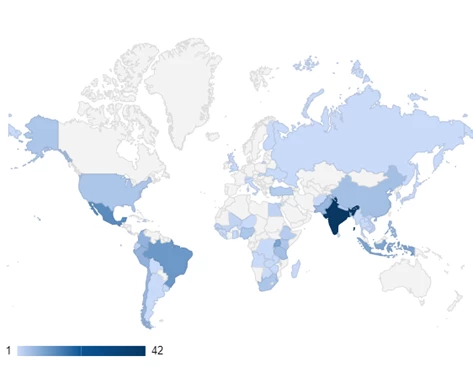Transport infrastructure planning and design take into consideration men and women’s differences in travel needs, patterns, and behaviors to promote gender equality. But do these differences also affect how they use intelligent transport systems (ITS)?
When I searched online for “IC card” (integrated circuit card used to pay transit fares), I found the pictures below (see Figure 1). They illustrate one of the differences between men and women: men tend to travel carrying very little while women tend to carry one or several bags. When women get on a bus, they need to locate the card in their bag which may take some time and hold up the queue behind them. To save time, a simple modification to the IC card reader could facilitate the process by not requiring them to take it out of their purse for swiping.

IC cards are just one of the many ITS applications available in the market. What more can be done to improve gender equality through these newly emerging applications?
Among the over 20 urban transport projects that World Bank supported or is supporting in China, most have ITS components. Wuhan and Urumqi are among the first few Chinese cities where we have projects for urban transport development. Both cities completed the initial construction of ITS, such as public transport information services, IC card, monitoring cameras at bus stops and in vehicles, traffic signals, e-police, and parking guidance, and recently started to implement a new Bank project to integrate and upgrade their existing ITS subsystems.

Using Wuhan and Urumqi as case studies and funded by the Umbrella Facility for Gender Equality, our team designed a survey and set up focus group discussions to explore how to maximize the benefits of ITS through incorporating gender-specific needs throughout the planning, design, implementation and operation stages.
Gender Analysis of Travel
We first conducted a gender analysis on travel characteristics of residents, including trip purpose, travel time, frequency, cost, and multi-oriented travel requirements. The findings in these two cities are consistent with similar analysis in other countries:
- Travel frequency: Women are more likely to take more frequent and shorter, multiple-purpose trips within one trip, than men.
- Mode choice: Women are more inclined to choose walking and using public transport, while men are more likely to choose taking a private car or taxi.
- Travel costs: The transportation costs of women are significantly lower than men’s, whether they use cars or public transport, with women spending just 65% of what men spend.
- Factors of concern in travel: Safety ranks highest among both genders, including traffic safety and personal security. However, when “time-saving” and “safety” conflict with each other, men are more likely to sacrifice safety in pursuit of efficiency. Women, on the other hand, take the opposite approach. Over 70% of women in both cities are afraid to go to less populated streets, underpasses, and remote bus stations.
The Use of ITS Applications
We also evaluated typical ITS applications that were used in Wuhan and Urumqi, paying special attention to the different needs of men and women when using ITS.
Overall, we found that ITS can provide more efficient management and higher quality services. The application of the systems also contributes to bridging the gender gaps in transportation. Because women use public transport-related ITS more frequently than men, the analysis shows that the use of the systems enhances women’s satisfaction with public transport.
Last but not least, safety is a big concern for women when they travel. The ITS applications related to safety (such as CCTV monitoring), receive more support from women. “Now citizens have accepted the camera and wish for more. Buses here, no matter big or small, all have cameras. Although we don’t know whether it works or not, we feel safe when it’s around,” said a woman in a focus group discussion in Urumqi.
A detailed analysis of gender and use of ITS can be found in our report, entitled “Gender Impacts of ITS”.
Guidance on ITS Planning, Design and Operation
Gender equality is smart economics. In this study, we found that incorporating gender-specific needs during the planning, design, operation and monitoring stages, and building gender awareness for policymakers and practitioners in transport development are essential to maximizing the most benefits of ITS. To guide policymakers and ITS practitioners, our team has ultimately developed a technical guideline for incorporating gender into ITS planning, design and operation. The guideline is available here.
China’s experience in developing ITS, although not unique, could help other countries where similar major investments are being considered.



Join the Conversation